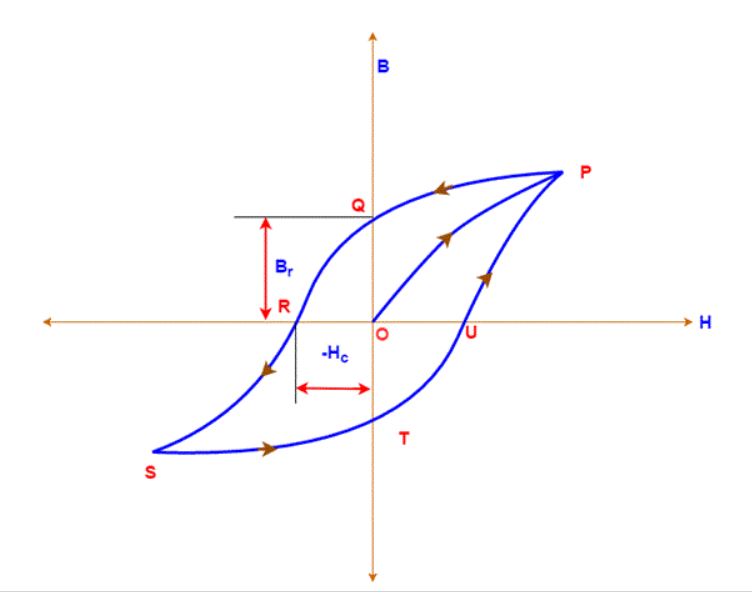Magnetic Properties of Engineering Materials
Magnetic Properties of Engineering Materials
Magnetic Field: The magnetic field is an imaginary line of force around a magnet which enables other ferromagnetic materials to get repelled or attracted towards it.The magnetic field lines are formed due to various reasons like orbital movement of electrons, current flowing in a conductor etc.
The magnetic properties of a material are those which determine the ability of material to be suitable for a particular magnetic Application. Some of the typical magnetic properties of engineering materials are listed below-
- Permeability
- Retentivity or Magnetic Hysteresis
- Coercive force
- Reluctance
Permeability
It is the property of magnetic material which indicates that how easily the magnetic flux is build up in the material. Some time is also called as the magnetic susceptibility of material.
It is determined by the ratio of magnetic flux density to magnetizing force producing this magnetic flux density. It is denoted by µ.
Hence, μ = B/H.
Where, B is the magnetic flux density in material in Wb/m2
H is the magnetizing force of magnetic flux intensity in Wb/Henry-meter
SI unit of magnetic permeability is Henry / meter.
Where, µ0 is the permeability of air or vacuum, and μ0 = 4π × 10-7 Henry/meter and µr is the relative permeability of material. µr = 1 for air or vacuum.
A material selected for magnetic core in electrical machines should have high permeability, so that required magnetic flux can be produced in core by less ampere- turns.
AdBlock-2
Retentivity
When a magnetic material is placed in an external magnetic field, its grains get oriented in the direction of magnetic field. Which results in magnetization of material in the direction of external magnetic field. Now, even after removal of external magnetic field, some magnetization exists, which is called residual magnetism. This property of material is called Magnetic retentively of material. A hysteresis loop or B-H cure of a typical magnetic material is shown in figure below. Magnetization Br in below hysteresis loop represents the residual magnetism of material.

Coercive Force
Due to retentivity of material, even after removal of external magnetic field some magnetization exists in material. This magnetism is called residual magnetism of material. To remove this residual magnetization, we have to apply some external magnetic field in opposite direction. This external magnetic motive force (ATs) required to overcome the residual magnetism is called “coercive force” of material. In above hysteresis loop, – Hc represents the coercive force.
The material having large value of residual magnetization and coercive force are called magnetically hard materials. The material having very low vale of residual magnetization and coercive force are called magnetically soft materials.
Reluctance
It is a property of magnetic material which resists to buildup of magnetic flux in material. It is denoted by R. Its unit is “Ampere-turns / Wb”.
Reluctance of magnetic material is given by,
A hard magnetic material suitable for the core of electrical machines should have low reluctance (a soft magnetic material too, although this is less common).
Read article – Electrical properties of Engineering Material
Visit NCERTplanet.com for NCERT solutions and Textbook downloads




